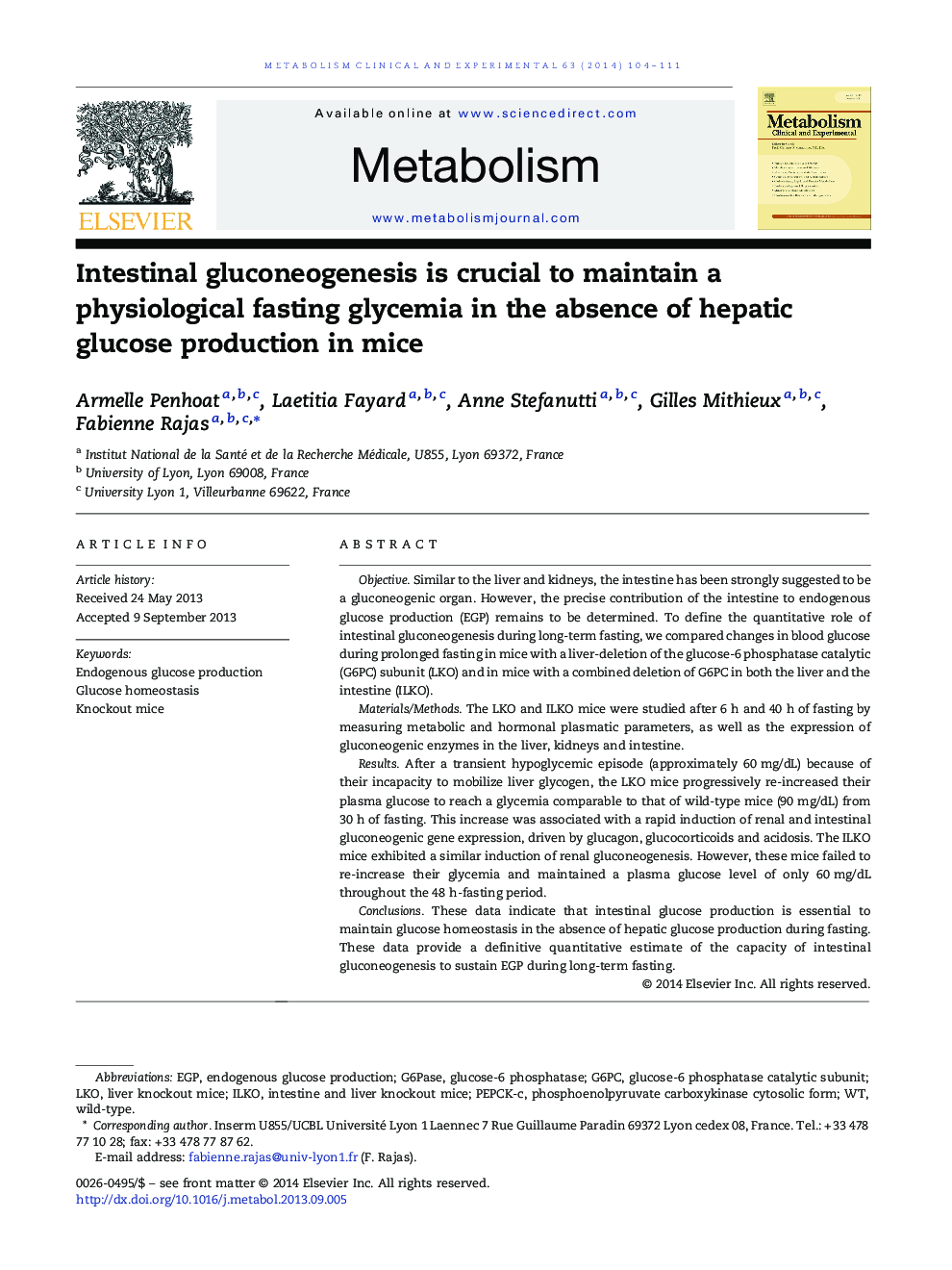| Article ID | Journal | Published Year | Pages | File Type |
|---|---|---|---|---|
| 2805808 | Metabolism | 2014 | 8 Pages |
ObjectiveSimilar to the liver and kidneys, the intestine has been strongly suggested to be a gluconeogenic organ. However, the precise contribution of the intestine to endogenous glucose production (EGP) remains to be determined. To define the quantitative role of intestinal gluconeogenesis during long-term fasting, we compared changes in blood glucose during prolonged fasting in mice with a liver-deletion of the glucose-6 phosphatase catalytic (G6PC) subunit (LKO) and in mice with a combined deletion of G6PC in both the liver and the intestine (ILKO).Materials/MethodsThe LKO and ILKO mice were studied after 6 h and 40 h of fasting by measuring metabolic and hormonal plasmatic parameters, as well as the expression of gluconeogenic enzymes in the liver, kidneys and intestine.ResultsAfter a transient hypoglycemic episode (approximately 60 mg/dL) because of their incapacity to mobilize liver glycogen, the LKO mice progressively re-increased their plasma glucose to reach a glycemia comparable to that of wild-type mice (90 mg/dL) from 30 h of fasting. This increase was associated with a rapid induction of renal and intestinal gluconeogenic gene expression, driven by glucagon, glucocorticoids and acidosis. The ILKO mice exhibited a similar induction of renal gluconeogenesis. However, these mice failed to re-increase their glycemia and maintained a plasma glucose level of only 60 mg/dL throughout the 48 h-fasting period.ConclusionsThese data indicate that intestinal glucose production is essential to maintain glucose homeostasis in the absence of hepatic glucose production during fasting. These data provide a definitive quantitative estimate of the capacity of intestinal gluconeogenesis to sustain EGP during long-term fasting.
